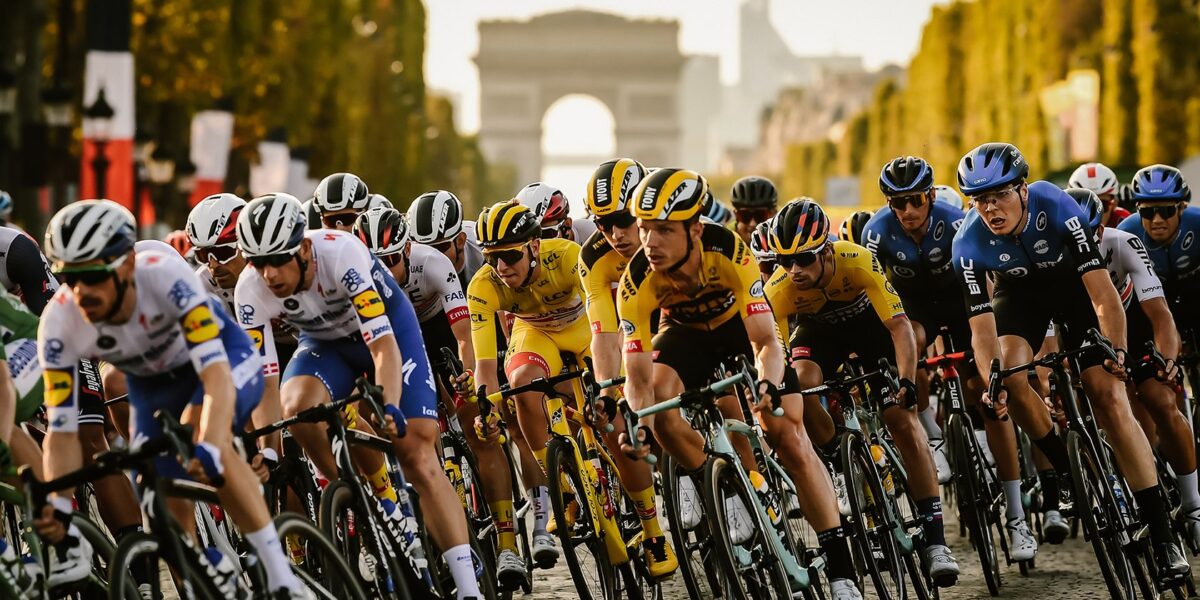Is the Tour de France the Most Watched Sporting Event?
The Tour de France is a prestigious and grueling multi-stage cycling race. It is held annually mainly in France, with occasional forays into nearby countries. The Tour spans 23 days and covers approximately 3,500 kilometers, testing the limits of endurance and teamwork. It’s a spectacle of athleticism, strategy, and the indomitable human spirit. But where does it stand in the rankings of global sports viewership?
Understanding Global Sports Audience Numbers
When considering the most watched sporting events globally, several contenders come to mind. The FIFA World Cup, the Olympic Games, and the Super Bowl claim enormous global audiences. The Tour de France, however, has a unique position as it occurs over several weeks and traverses much of France’s picturesque landscape, potentially increasing cumulative viewership.
The FIFA World Cup captures worldwide attention every four years. Billions tune in to watch, with the 2018 Final alone drawing over a billion viewers. The Olympic Games, both Summer and Winter editions, showcase a variety of sports. The scope of this event adds to its global appeal. The Super Bowl, while mainly a U.S. event, has gained international popularity, drawing over 100 million viewers annually.
The Tour de France in Comparison
The Tour de France draws in millions of global viewers each day of the race. Official figures suggest a yearly television audience of 3.5 billion people across 190 countries. Broadcast partners, such as Eurosport and NBC, provide extensive coverage, including live broadcasts and feature highlights. It is indeed remarkable compared to other sports events happening within a single day or a few weeks.
Furthermore, the Tour de France benefits from various media coverage avenues. There are live streams, social media updates, and analysis, which enhance its reach. Not to forget, it has an exceptional ability to engage on-site spectators. Fans line the race routes for hours just to catch a glimpse of cyclists whizzing past.
Factors Influencing Tour de France Viewership
The spirit of competition and the beauty of the French landscape draw people to the Tour de France. Each stage offers breathtaking views. People marvel at the scenery just as much as they follow their favorite teams and athletes. The strategic depth of the race also holds viewers’ fascination. Tactics involving team support, breakaways, and sprint finishes make for compelling viewing.
Furthermore, the race’s rich history adds to its allure. Key moments in its past, such as epic mountain battles or controversial moments, have cemented its legacy. Some viewers appreciate the sense of nostalgia watching an event with roots stretching back to 1903.
Challenges to Measuring Viewership
Accurately measuring the Tour’s viewership poses challenges. The event spans three weeks and crosses varied time zones. There’s variability in viewership numbers influenced by several factors, such as stage significance and scheduled timings. Different marketing strategies and regional interests might affect how much attention different stages garner compared to others.
Live viewership data for each stage varies. Some stages viewed as critical may attract higher numbers compared to relatively uneventful segments. However, the cumulative effect of these stages is responsible for its impressively large annual viewership claim.
Comparisons to Single-Day Events
Events like the Super Bowl and World Cup Final concentrate viewership into a few hours. They create intense excitement and a build-up that generates immediate collective interest. In comparison, the Tour’s stretched timeline could dilute its peak attention despite its large audience reach across its duration.
This builds into the debate on how one measures most watched. If considering single moments of peak focus, single-day events might seem more impactful. However, in cumulative reach and engagement over time, the Tour de France makes a strong case for itself.
Niche vs. Broad Appeal
The Tour’s appeal first targets cycling enthusiasts. Its culture, symbols like the yellow jersey, and technical discussions hold interest. Unlike other sports events with a broader appeal, this specialty focus can limit its maximum possible viewership despite dedicated followings globally.
However, the Tour’s personality, blend of athleticism, and terrain storytelling invite wider audiences. It offers a refreshing take from more mainstream sports narratives. Its traditional loyal fanbase adds to the events’ reliability in retaining consistent yearly audiences.
Impact of Digital Platforms
The rise of digital platforms has expanded Tour coverage possibilities. Social media and online streaming have improved accessibility and engagement. Livestreams cater to global audiences who might not have traditional TV access. These platforms offer real-time updates, interactive maps, and insight tools, enriching the viewer’s experience.
Such avenues have become vital in capturing younger audiences. They demand on-the-go content accessible from anywhere. These digital strategies ensure the Tour maintains its position among the most followed sporting events worldwide.
Cultural and Economic Implications
The Tour de France holds significant cultural value beyond sports. It represents a celebration of teamwork, national pride, and cyclist dedication. Regions hosting stages experience a surge in tourism. The local economy benefits from increased visitation as primarily non-urban areas become focus points for tourists.
The event has also influenced cycling’s role as a popular transport and recreational activity. Its broadcasting draws attention not only to professional cycling but also to its incorporation into a daily lifestyle. This positions cycling as a sustainable transport option in environmental discussions.
Conclusion
Examining whether the Tour de France is the most watched sporting event depends on metrics used. However, its global viewership, marathon traversal spectacularly hosts cultural and competitive excitement over weeks. Such qualities ensure its preserved and enduring place within top-ranking worldwide sports events.
Having a quality Park Tool bike repair stand makes home maintenance much easier.
Improve visibility with a reliable bike light set for safer riding.


